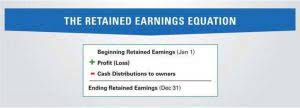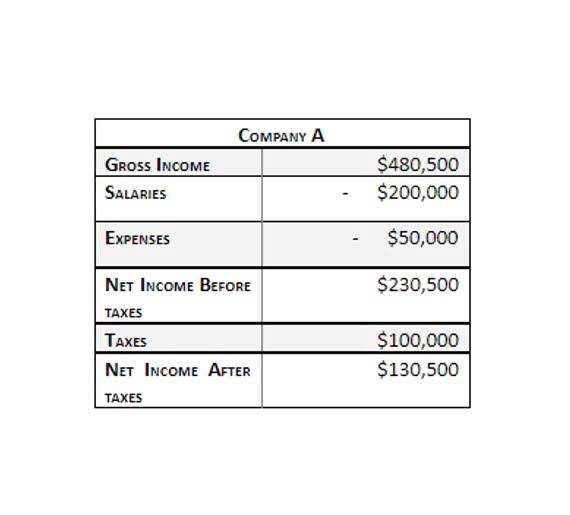
By the end of the PP&E’s useful life, the ending balance should be equal to our $200k assumption – which our PP&E schedule below confirms. Under straight-line depreciation, the asset’s value is reduced in equal increments per year until reaching a residual value of zero by the end of its useful life. In closing, the net PP&E balance for each period is shown below in the finished model output. We’ll now move on to a modeling exercise, which you can access by filling out the form below. Download CFI’s free Excel template now to advance your finance knowledge and perform better financial analysis. Therefore, Company A would depreciate the machine at the amount of $16,000 annually for 5 years.
- Unlike the other methods, the double-declining balance method doesn’t use salvage value in its calculation.
- The scrap value is also important to an organisation as it determines the cash flow it shall receive upon selling an asset after its useful life.
- It helps institutions determine the gradual decrease in value over time and appropriately allocate the asset’s cost.
- Organizations consider this an essential factor when evaluating an asset’s complete worth.
- This amount is carried on a company’s financial statement under noncurrent assets.
- Salvage value is also called scrap value and gives us the annual depreciation expense of a specific asset.
- In the example, the machine costs $5,000, has a salvage value of $1,000, and a 5-year life.
Determining The Salvage Value Of An Asset
In such cases, the insurance company decides if they should write off a damaged car considering it a complete loss, or furnishing an amount required for repairing the damaged parts. So, in such a case, the insurance company finally decides to pay for the salvage value of the vehicle rather than fixing it. The beginning balance of the PP&E is $1 million in Year 1, which is subsequently reduced by $160k each period until the end of Year 5.

PP&E Roll-Forward Schedule Build
With a 20% depreciation rate, the first-year expense is $800, and the second year is $640, and so on. Companies consider the matching principle when they guess how much an item will lose value and what it might still be worth (salvage value). The matching principle can be considered to be a rule in accounting that says if you’re making money from something, you should also recognize the cost of that thing during the same period. If a company believes an item will be useful for a long time and make money for them, they might say it has a long useful life. A salvage value of zero is reasonable since it is assumed that the asset will no longer be useful at the point when the depreciation expense ends.

Example of salvage value calculation for a car belonging to a business for after and before tax
This $1,000 may also be considered the salvage value, though scrap value is slightly more descriptive of how the company may dispose of the asset. Unless there is a contract in place for the sale of the asset at a future date, it’s usually an estimated amount. Liquidation value is usually lower than book value but greater than salvage value. The assets continue to have value, but they are sold at a loss because they must be sold quickly. The salvage or the scrap value is estimated when the useful life of an asset is over and can’t be used for its original purpose.
Depreciation is an accounting method that companies use to apportion the cost of capital investments with long lives, such as real estate and machinery. Companies seldom report depreciation as a separate expense on their income statement. Thus, the cash flow statement (CFS) or footnotes section are recommended financial filings to obtain the precise value of a company’s depreciation expense.
- We’ll assume the useful life of the car is ten years, at which the car is practically worthless by then, i.e. for the sake of simplicity, we’ll assume the scrap value is zero by the end of its useful life.
- In the depreciation schedule above, the refrigerator’s ending book value in year seven is $1,000, the same as the salvage value.
- It exhibits the value the company expects from selling the asset at the end of its useful life.
- Furthermore, the balance sheet would show an overstated value of fixed assets and their earnings.
- So, when a company figures out how much something will lose value over time (depreciation), they also think about what it might still be worth at the end, and that’s the salvage value of that asset.
Calculate Accumulated Depreciation
This difference in value at the beginning versus the end of an asset’s life is called “salvage value.” Let’s figure out how much you paid for the asset, including all depreciable costs. GAAP says to include sales tax and installation fees in an asset’s purchase price. Yes, salvage value can be considered the selling price that a company can expect to receive for an asset the end of its life.
Salvage Value Calculation
There’s also something called residual value, which is quite similar but can mean different things. Sometimes, it’s about predicting the value of the thing when a lease or loan ends. Other times, it’s about figuring out how much it’s worth when it’s done for good, minus the cost of getting rid of it. Salvage value might only focus on its worth when it’s done, without considering selling costs. This method estimates depreciation based on the number of units an asset produces. In the example, the machine costs $5,000, has a salvage value of $1,000, and a 5-year life.
Declining Balance
- This method requires an estimate for the total units an asset will produce over its useful life.
- By the end of the PP&E’s useful life, the ending balance should be equal to our $200k assumption – which our PP&E schedule below confirms.
- The matching principle is an accrual accounting concept that requires a company to recognize expense in the same period as the related revenues are earned.
- This means that of the $250,000 the company paid, the company expects to recover $40,000 at the end of the useful life.
Returning to the “PP&E, net” line item, the formula is the prior year’s PP&E balance, less Capex, and less depreciation. Once repeated for all five years, the “Total Depreciation” line item sums up the depreciation amount for the current year and all previous periods to date. The depreciation expense comes out to $60k per year, which will salvage value formula remain constant until the salvage value reaches zero. In a full depreciation schedule, the depreciation for old PP&E and new PP&E would need to be separated and added together. Capex as a percentage of revenue is 3.0% in 2021 and will subsequently decrease by 0.1% each year as the company continues to mature and growth decreases.
Straight line depreciation is the most commonly used and straightforward depreciation method for allocating the cost of a capital asset. It is calculated by simply dividing the cost of an asset, less its salvage value, by the useful life of the asset. By considering the residual value, institutions can accurately record and report depreciation expense in their financial statements, ensuring compliance with accounting standards and regulatory requirements.

Depreciation and After-Tax Salvage Value Assumptions
If the residual value assumption is set as zero, then the depreciation expense each year will be higher, and the tax benefits from depreciation will be fully maximized. The difference between the asset purchase price and the salvage (residual) value is the total depreciable amount. The useful life assumption estimates the number of years an asset is expected to remain productive and generate revenue. Straight-Line Depreciation is the uniform reduction in the carrying value of a non-current fixed asset in equal installments across its useful life. Depreciation calculations determine the portion of an asset’s cost that can be deducted in a given year.
0 Comments
Leave A Comment